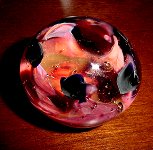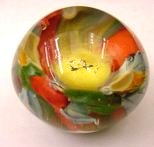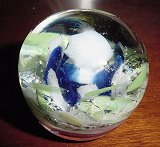




The following information is from Book of Formulas: Recipes, Methods and Secret Processes prepared by the Editorial Staff of Popular Science Monthly, copyright 1932.
I found this book at a public library tag sale. With a title like this and a price tag of 25 cents who could resist?
I have found the publication educational and entertaining on many aspects of life in the early part of this century, when many items were made in the home and not purchased in a store. Homemade adhesives, cosmetics, perfumes, paints and whitewashes, chemistry, metals, arts and decorations, the topics go on and on.
The technical information is claimed to have come from authoritative sources at the time, including U.S. Government scientists and industrial scientists of high standing. The following glass related information is for your enjoyment.
This historical data and information is for your entertainment and educational purposes only. Times have changed and some of the recipes and procedures may contain information and/or material that is or may be harmful to you or the environment. Use them at your own risk!
Recipes for Making Glass
| White Bottle Glass | parts |
|---|
| Sand (white) | 64 |
| Lime | 6 |
| Sodium Carbonate | 23 |
| Sodium Nitrate | 5 |
(The sodium nitrate acts as a decolorizer) |
| Violet Glass | parts |
|---|
| Sand | 50 |
| Soda Ash | 15 |
| Saltpeter | 2 |
| Chalk | 5 |
| Pyrolusite | 10 |
| Ferric Oxide | 2 |
|
| Common Flint | parts |
|---|
| Quartz Sand | 110 |
| Minium | 110 |
| Soda Ash | 33 |
|
| Green Bottle Glass | parts |
|---|
| Lime | 11 |
| Sand | 63 |
| Sodium Carbonate | 26 |
|
| Blue Glass | parts |
|---|
| White sand | 10 |
| Potassium Carbonate | 3.5 |
| Borax | 1 |
| Red Lead | 15 |
| Cobalt (ic) Oxide | 0.4 |
|
| Red Glass | parts |
|---|
| Sand | 100 |
| Red Lead | 200 |
| Copper oxide | 6 |
| Stannic Oxide | 6 |
|
| Green Glass | parts |
|---|
| Sand | 50 |
| Soda Ash | 15 |
| Calcium Carbonate | 5 |
| Saltpeter | 1 |
| Ferric Oxide | 5 to 10 |
| Copper (ic) Oxide | 3 to 10 |
|
| Yellow Glass | parts |
|---|
| Sand | 65 |
| Soda ash | 25 |
| Chalk | 3 |
| Wood Charcoal | 1 |
|
Quoting the text:
Glass is a fused mixture of sodium or potassium silicates with one or more of the insoluble silicates with varying proportions of other substances which produce color, or give to the glass some especial characteristic such as certain refractive indexes or tolerance to reagents. The silicate is derived from the sand (silicon dioxide, silica, quartz) used, and in practice is mixed with sodium carbonate or potassium and the other ingredients, and fused, the silica entering into chemical combination with the carbonate or base to form the glass.
Window glass is made by fusion of a mixture of sand, sodium carbonate or sodium sulfate, and calcium carbonate (limestone) in fire clay pots.
Flint and lead glass are made from ground flint, lead oxide, and potassium carbonate, with or without the addition of saltpeter, and is very fusible. Ordinary household articles such as drinking tumblers, vinegar jugs and decanters, are made from this quality of glass.
Bottle glass is green due to the iron it contains, and arsenious oxide (white arsenic) is often added to counteract this green color by oxidizing the iron.





